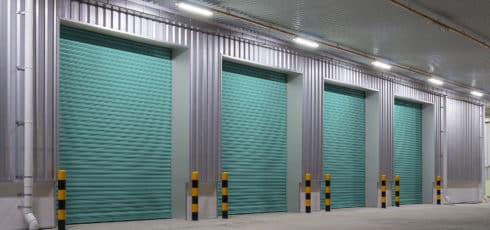Load factors in commercial real estate have been on the rise in recent years, leading to questions about why this trend is occurring and how it affects tenants.
The impact of these changes and trends can be significant. Not long ago, load factors in new buildings were in the low 20% range, but now they are approaching more than 30%, meaning that tenants are paying up to 10% more for the same amount of usable square feet. This can make it more challenging for businesses to find affordable and suitable office space, especially in desirable locations.
It is important for you to be aware of the load factors in the buildings you are evaluating and carefully consider the impact they may have on your leasing decisions. This allows you to get a full picture of your options during the site selection process. This is why hiring a local broker with expertise and up-to-date market research is imperative.
In this article, we discuss how load factors affect your rent and why we are seeing load factors increase.
What Is Load Factor?
A load factor is the difference between the usable square footage and the rentable square footage of a building, expressed as a percentage. The usable square footage is the space within the walls of the tenant’s space, while the rentable square footage includes common areas such as hallways, lobbies, fitness centers, and restrooms. The higher the load factor, the more a tenant pays for the same amount of usable space.
Read Next: Rentable vs. Usable Square Footage: What’s the Difference?
Let’s say a tenant is interested in leasing an office space with a usable area of 1,000 square feet. However, the landlord informs the tenant that the rentable area of the space is 1,200 square feet, due to the inclusion of common areas such as hallways, elevators, and building amenities. This means that the load factor for the space is 1.2, or 20% (i.e., the rentable area is 20% larger than the usable area).
If the landlord is charging a base rent of $30 per square foot, the tenant would need to pay for the rentable area of the space, not just the usable area. This means that the tenant would need to pay for 1,200 square feet at a rate of $30 per square foot, which amounts to a total base rent of $36,000 per year.
Why Are Load Factors Rising?
The trend of increasing load factors is mostly seen in remeasured buildings and new buildings. We are also seeing load factors rise more rapidly in some submarkets and slower in others. This is due to a combination of factors, including changes in BOMA (Building Owners and Managers Association) standards and the addition of amenities in buildings.
Read Next: Your Guide to the Elements of a Commercial Lease (Terms, Definitions)
BOMA Standards Update in 2017
BOMA updated its standards for measuring rentable space in 2017, which resulted in a slight increase in load factors for buildings.
The previous standards, known as the BOMA 1996 standards, were widely used but had become outdated and did not reflect changes in building design and technology.
The new standards, called BOMA 2017, introduced several changes to the way rentable space is calculated. One significant change was the introduction of a new category of space called “Building Amenities,” which includes common areas such as fitness centers, conference rooms, and rooftop gardens. These spaces are now included in the rentable area of a building and are subject to rent charges.
Another change was the requirement for landlords to measure to the exterior surface of exterior walls and the centerline of demising walls, rather than to the interior finish of the demising walls.
The BOMA 2017 standards also introduced a new method of measuring floor area called “Method B,” which provides a more precise measurement of space by including the area of building columns within the rentable area. This can result in a slight increase in rentable areas as well.
Overall, the updates to the BOMA standards in 2017 aimed to provide a more accurate and transparent measurement of rentable space. However, the changes also had the effect of increasing load factors in some buildings, as rentable space was increased by the inclusion of building amenities and other common areas.
Added Amenities
Another reason for the increase in load factors is the trend of adding amenities to commercial buildings. This trend has rapidly increased with the heightened pressure on landlords to get tenants into their buildings.
While these amenities can be attractive to tenants, they also increase the amount of rentable space in a building, resulting in higher load factors. Consequently, the overall cost of occupancy will increase for tenants. This is because tenants are paying for a proportionate share of the cost of amenities that they may not use or may not consider essential for their business operations.
Read Next: What Are Operating Expenses for Office Space in Austin, Texas?
The load factor of a building can increase significantly with the addition of amenities. For example, imagine you are leasing a space in a 100,000-square-foot building, with 25,000 square feet of amenities. The building currently has a load factor of 25% (meaning that the rentable area is 25% larger than the usable area). If the owner converts 5,000 square feet of usable area to a fitness center, the load factor could increase to 31% or higher.
While it may seem like tenants could offset these higher costs by building out less space and sharing amenities like building conference rooms, this is not always feasible. Many tenants prefer to have their own dedicated conference rooms, for example, rather than relying on a shared space.
In recent years, we have also seen some buildings with different load factors for each floor, which can further contribute to higher overall load factors. They may assign different load factors for each floor for a few reasons.
Firstly, different floors may have different layouts, configurations, and sizes, which can affect their rentable area and, therefore, their load factor. For example, a floor with more common areas, such as hallways or lobbies, may have a lower usable area compared to a floor with more private office spaces.
Secondly, some floors may have additional amenities or features that increase their value, such as larger balconies, which can result in a higher load factor compared to other floors.
Conclusion
Overall, the trend of increasing load factors in commercial real estate is a complex issue. As load factors continue to rise, it is important for tenants to be aware of the load factors in the buildings they are evaluating and carefully consider the impact they may have on their leasing decisions.
Knowing the comparative load factors in the market is also important. By comparing the load factors, you are able to get a full picture of your options during the site selection process. This is why hiring a local broker is imperative.
Are you ready to start your office search in Austin? Schedule a free consultation with one of our expert tenant representation brokers today.














